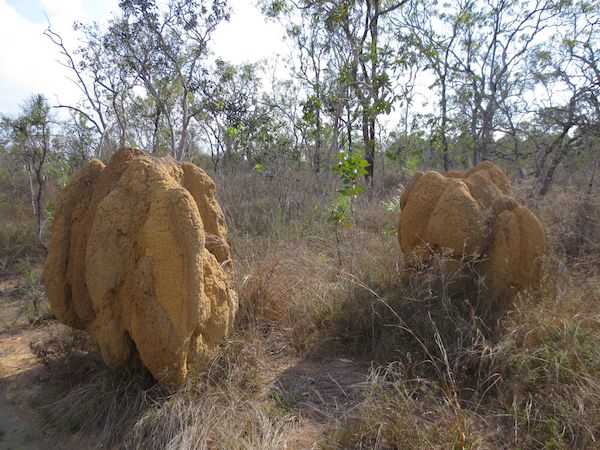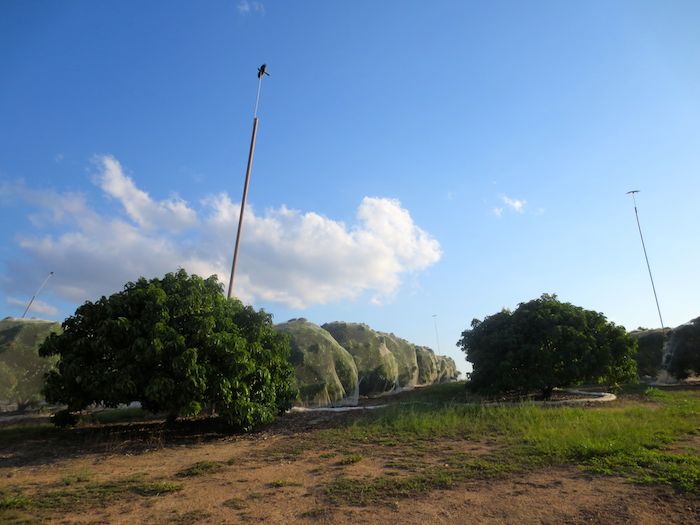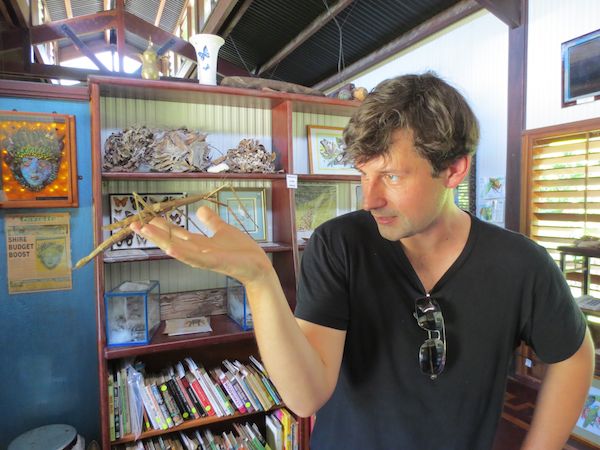Taylor Swift
Shared posts
Watch the A$AP Mob and Method Man take it back to the 90s in ‘Trillmatic’ video
Taylor SwiftThis song is INCREDIBLE
Old school meets new school in the crew’s latest clip.
With A$AP Rocky and A$AP Ferg both dropped solo records this year, the first proper album from the A$AP Mob has been pushed back until 2014. However, the crew has shared the first glimpse of the album with a video for new cut ‘Trillmatic’.
‘Trillmatic’ showcases A$AP Nast, who does his best Nas impression over a Diggin’ in the Crates-reminiscent track by A$AP Ty Beats, but everyone is outshined by a scene-stealing Method Man, who rapid-fires his rhymes and brushes off “less than impressive rappers left in my path.”
The video fits the song’s tone to a tee. Nast claims the “90′s raised me,” and it shows: Timberland boots, blurred T-shirt logos, monochrome project hallways, and plenty of crewmembers on hand. Watch it below.
3D Super Hang-On Review: Turning an OK Game Into an Amazing Experience
Taylor SwiftWHAT??? WOW
Pursuing The Platypus
Taylor SwiftThis is long but almost exclusively about Australian wildlife and therefore worth it

The platypus is an animal that looks like it was designed in a pub, by a committee, the night before it was due. To make one at home, you'll need a duck bill, a small beaver, four webbed feet, a venomous spur, some spare parts (like five X chromosomes), and a watch battery to operate the electrosensitive bill. Place the platypus in a slow-moving stream with muddy banks where it can dig itself a little daytime burrow to rest in.
There are a few anatomical giveaways that the platypus was a rush job (for example, they forgot to give it nipples, so that it has to sweat milk through its skin), but for the most part it holds together well. The animal itself seems fat and happy, and it certainly thrives in Australia. Despite its famous oddness, the platypus is not an endangered species. It's not even particularly rare. The Australian name for the beast—water mole—gives you a sense of the excitement and child-like wonder it arouses in the local population.
I remember walking in Manhattan once and coming across a group of tourists who were taking pictures of a pigeon. I have no idea where they were from, but it was clear they had never seen such a bird before and were charmed by all the stupid pigeon things it was doing. New Yorkers had stopped to stare at them in rank amazement. I think of this little tableau often in Australia, whenever I am struck dumb with wonder by a native animal.
The local people try to be diplomatic. They agree it's nice to appreciate nature, and sporting of us to have come all this way to look at their fauna. But gush too long about the majesty of the kangaroo and their attention will wander. These animals are as captivating to the average Australian as a raccoon is to us: neat in principle, but you'd happily see it extinct after the second time it disembowels your garbage can. The only animal Australians reliably want to talk about is the grizzly bear. On a continent whose mightiest carnivore was the size of a German shepherd, and whose biggest existing one is no bigger than a beagle, the grizzly bear keeps a firm grip on the imagination.
But who needs bears when you can see a platypus?
The platypus inhabits Tasmania, most of the east coast of Australia, and the nightmares of the little worms and crustaceans that are its primary food. One of the many things distinguishing it from other mammals is a soft electrosensory bill, which can sense delectable muscle contractions in prey animals as they try to escape. To a platypus, fear is an appetizer. The creature's brain integrates these minute electrical currents with its equally acute sense of touch, giving it a vivid and unimaginably alien mental picture of the stream bottom. It dives with its eyes closed.
To try to spot a platypus, I've ventured into the Atherton Tableland, an upland plateau stretching from Innisfail to Port Douglas in the northern part of the animal's range. While the Northern Queensland coast is unabashedly tropical, with lush rain forest that runs directly onto postcard beaches, the Atherton Tableland looks more like Iowa, albeit an Iowa with a thriving banana industry. If the air conditioning is working, there's little to remind you how close you are to the Equator. The tableland is a sleepy and bucolic region of farms and old mining towns, one of which, Yungaburra, boasts a platypus viewing area.
On the map, Yungaburra looks like it should be easy drive from Townsville. This is a joke my map loves to play. Like the American West coast, the area is so thinly settled that you are constantly embarking on thirteen-hour drives to places you thought you'd visit for lunch. I'm dismayed but not particularly surprised to find myself still in the car at nightfall, climbing a series of switchbacks to the relatively high elevation of the tableland. Once on top, I pass through a series of one-horse towns that are boarded up for the night even though it's only eight o'clock. Between the towns, the darkness is Stygian.
Yungaburra is a tin mining town that's lately turned to bed-and-breakfast tourism. The platypus viewing area is just a little blind next to a spot where the road crosses a stream. You can stand behind it and aim your camera without spooking the platypus, although you can equally easily stand in the reeds and the platypus will still ignore you. The Yungaburra platypus have adapted to the paparazzi.
The biggest challenges in platypus photography are finding adequate light, predicting where the beasts will surface, and getting your shot before a fellow enthusiast elbows past you. The platypus① rove along the bottom at a brisk clip, working their way back and forth along the river banks, and they don't stay on the surface for very long.
I make my first attempt at dawn, when the animals are supposed to be active, but I've underestimated how quickly the tropical sun pops into the sky. By the time I've had some tea and walked the half-mile to the creek, Old Scorchy is already well overhead, and it's broad daylight. I settle for a nice morning walk along the creekside trail, which slaloms through a typical thicket of informational placards. No one can touch Australians when it comes to stretching a thimbleful of local history into hundreds of board-feet of laminated prose.
I learn that Ron Darvis used to amuse himself by dropping rocks into the creek from the bridge, which washed away in the mid-sixties, leaving only memories. Ivan Johns recounts how, in his youth, he used to cross the bridge to get to the other side of the creek. How he effected the crossing in later years is not revealed. Billy Duplock once minded the pump across the stream, which is also gone, but back in the day it was powered by coal. You may spot a lump of coal by the stream, if you're lucky. And over here lies the concrete slab the pump used to stand on. They say that late at night, you could hear old Billy playing his cornet from all the way back in the village. How we laughed!
Feeling a little overwhelmed, I turn my attention to the creek. Decades of minutely-recorded history may be flowing before me, but there's no sign of platypus. The only animals visible are water striders, skating energetically back and forth across the coffee-colored surface. Their ripples make pretty interlocking patterns on the water.
I stand quietly for a few minutes, hoping that a shy platypus will relent and poke out its bill. Then I hear a rustling and a scratching behind me, back on the trail. I turn around as slowly as I can, and my heart catches in my throat. A gorgeous big bird, resembling a wild turkey but with a bright red head and yellow wattle, has wandered onto the footpath and started raking at the leaf litter. It clearly doesn't know I'm here. Every few seconds it stops to look around, or to tug at an itchy spot in its feathers, and then goes back to its task.
I try not to breathe, elated by my good luck. By keeping still to see the platypus, I've given myself a once-in-a-lifetime chance to see this beautiful mystery bird instead.
But I don't get to savor the moment for long. A jogger is crashing along the trail, heading inexorably towards us. He emerges in a cacophony of broken twigs and crunching leaves, nearly knocking the bird over with his foot. I expect to see it disappear in a flurry of alarm calls and feathers. But the bird doesn't even look up. It just keeps on raking, intent on its task and clucking softly to itself. I take a tentative step forward—nothing. I walk right up to it—still nothing. The only reaction I can get from the thing is an annoyed glance if I stand too close to the leaf pile.
This is the problem with Australia. As a visitor, you lack a frame of reference. I have just met my first brush turkey, a native whose fearless single-mindedness has earned it the enmity of every suburban gardener in Queensland. The brush turkey roams the lawns and gardens of decent folk during breeding season determined to cover any available surface with a tall pyramid of rotting vegetation. The male tends the mound to keep it at the right temperature for incubating eggs in. His incessant raking, combined with laws that make it a crime to touch or even speak harsh words to a native animal, drive homeowners to despair.
The Wildlife Queensland website puts it best:
Favorable conditions provided by this tree-canopy and high available feeding resources replicate their preferred closed forest habitat. This has changed the micro-climate of otherwise “turkey-unfriendly suburbs” into turkey utopia.The sight of your backyard bush-landscape being converted into an unattractive pile of decomposing compost matter is enough to infuriate any proud home owner. With his powerful legs and insatiable desire to mound and breed, the suburban backyard is no match for these industrious birds. A single male is capable of raking material into the mound from not only yours, but also surrounding neighbours’ yards, when required.
That desire to breed is bad news for local domesticated chickens, particularly black-feathered chickens, who go on to hatch a generation of hideous and distressingly vital turkey-chicken hybrids. "It really is what you’d expect a half chicken, half turkey to look like – just this weird little thing".
The only legal way to get rid of a brush turkey is to call a professional. But it's hardly worth the bother, or the money, since the brush turkey is not easily deterred. The bird has a work ethic that, if it weren't being used against them, suburbanites would envy. Illegal ways of getting rid of brush turkeys (short of murder, which really brings down the hammer of Australian environmental law) are equally futile. Spray them with a hose, chase them with dogs, fence in your garden—you will struggle in vain. These birds must rake.
The bush turkey fits a pattern where Australian animals in contact with people either head straight for extinction or flourish beyond all reason. The Wildlife Queensland website lists a whole menagerie of other misery-inflicting birds. While the brush turkey is destroying your garden, you'll be busy fending off swooping birds that dive-bomb you if you get within a hundred meters of the nest they've built on top of your house.
There are several species of swoopers, but the Australian magpie is the most notorious. For most of the year, this sweet-voiced bird is the ornament of any garden. But when his eggs hatch, the air war begins. The male bird will aggressively defend his territory, and takes a particularly dim view of cyclists. There is all kinds of helpful advice for dealing with magpies, including upbeat, crafty ideas like affixing googly eyes and pipe cleaners to your bike helmet. How well this self-abasement works in practice is another matter.
The dark truth is that magpies are crafty, unpredictable, individualistic, and really smart. And they really seem to hate bike helmets. You can sense the undernote of despair running through the chirpy official advice on how to cope with them:
Do not return after an encounter. Australian magpies have an incredible memory (as with all members of the Corvid family, they are very intelligent) and will attack the same people again and again. It is also too bad if you happen to look like someone they attacked before...Be aware that very aggressive magpies can attack from the ground, aiming for the face and eyes. These are problem birds and you should alert the Parks or Environment Department in your State or Territory immediately. If you encounter a bird in this situation, cover and protect your eyes no matter what else and move yourself out of the situation.
So to summarize: if a magpie harasses you, remain calm, walk quickly out of its territory, and start a new life.
While swooping magpies, butcher birds, and plovers harass your person, other species specialize in destroying property. The kookaburra is notorious for becoming obsessed with windows, and will peck relentlessly at its reflection until every human being within fifty meters has been rendered insane. A corvid called the Little Raven will "occasionally develop the habit of pulling windscreen wiper blades and windscreen rubbers from cars. These articles are then discarded." The site charitably suggests that wiper blades contain a chemical similar to the smell of a rotting carcass, confusing the birds. Another theory is that Little Ravens are just big jerks.
And your children aren't safe, either. The Australian White Ibis has their number. "In some schools, the teachers train children how not to be intimidated by ibis. Otherwise the birds have been known to run up to the little kids and snatch their sandwiches out of their hands."
The latest in the catalogue of animal miseries to hit Brisbane② has been the flying fox, a large and highly social kind of bat. This gregarious, nocturnal, and very vocal animal roosts in trees and makes an unearthly amount of noise in the pre-dawn hours. At least one pair of homeowners has been driven to the despair of using an air horn to try to scare them off their new home in a tree right by the couple's window. Their lawyer makes a plaintive appeal to lovers of order everywhere. "Clearly, these noisy, defecating, Hendra virus and lyssavirus-carrying creatures are not meant to be in suburbia, especially in such large numbers"
But it's really suburbia that's not meant to be in Brisbane.
I can't empathize with Queenslanders' attempt to impose one of the world's dullest landscapes on their incredible corner of the planet. Australian animals get few victories, and should be allowed to relish the ones they're given. From their perspective, we're the noisy, defecating, virus-carrying creatures that ruined their neighborhood a long time ago.
If the brush turkey were afraid of people, tourists like me would pay hundreds of dollars and endure great discomfort and hardship to travel into its territory, lying in blinds for half the day in hope of catching a glimpse of his magnificent compost heap. But since the brush turkey doesn't hide from people, no one gives him a second look. There are no bird watchers stalking the Noisy Miner or posting an excited Facebook status because they've just lost an eye to a magpie.
Before the day is out, I find myself shooing brush turkeys off the footpath so they don't interfere with my search for the platypus. The bird is just as striking as when I first saw it, but now it's just a pretty pest, because it's not afraid of me.

Failing to find a platypus at sunrise, I drive back a few days later to try my luck at dusk. On the way I stop at the Marreba Wetlands nature reserve.
You can't tell just by looking what is primeval and what is recent in Australia. The climate here is weird, aperiodic, and prone to abrupt shifts. Places that look like Mars today may have been lush and green just a few decades back. Other areas, like the Daintree rain forest, have not changed in tens of millions of years.
The Mareeba wetlands are a good example. On their face, they look like a slice of real Australia that somehow escaped being turned into sugar cane plantation like the surrounding country. But twenty years ago, Mareeba was bare, a piece of nuisance wasteland that a far-thinking developer decided to restock with local plants. The new marsh attracted birds, fast-growing eucalypts grew along its edges, the termites came in to deal with the fallen leaves, and today the park looks like it's been here forever.
Pulling into the parking lot, I see a young couple standing by their car, looking over their hood at an emu. The emu is trying to circle over to their side to ask them a question. They are circling in the same direction, skeptical of the bird's intentions. It's not clear how long this dance has been going on, but the couple seems happy to see me, while the emu is frankly delighted. He abandons his pursuit and heads over to my car with what I can't help but notice are very rapid strides. The couple is watching me with a mixture of relief and curiosity as I step out of the car, propelled by some kind of idiot bravado. They have been wondering for some time now what happens when you let the emu reach you, and I am about to demonstrate it for them. I feel a sudden longing to get inside the visitors' center.
It's hard not to quail when an emu stares you in the eye. The bird keeps its head absolutely level as it walks, which has a hypnotic effect. Its eye level is my eye level. The emu has big eyes, gorgeous eyelashes, and much too sharp a beak. I break eye contact for an instant to admire the three large claws, so similar in shape and purpose to those of the cassowary.
Articles that describe the emu call it "inquisitive", and I have little doubt that this bird's natural curiosity has been reinforced by a daily flow of treats, given perhaps less than willingly by a stream of visitors. I have nothing to give the bird, and the emu and I stand for a while digesting this fact. I can see the couple edging their way to the visitors' center, and I start backing towards it myself, with the emu matching my steps like a tango partner.

The visitors' center is cool and pleasant, with two rangers on duty. They roll their eyes at our close encounter. "Ah yeah, that's Steven. He's a bit of a pest." One of the rangers asks which path I'm going to follow, and hands me a photocopied sheet showing carefully drawn places of interest (a statue, a termite mound) along the trail. I must take great care not to crease this, and return it in the bin when I've completed my loop. And I should probably re-apply my sunscreen.
I take the loop trail around the central pond. Steven stays in the parking lot. The landscape here is red and sere, punctuated with termite mounds. They are sun-baked and very tall, and most betray no sign of activity on the outside. In places where fragments have broken off the mound, you can see that it's an intricate three-dimensional maze of tunnels. Here and there a thread of termites, which look just like ants, wends its way across the top of a termite mound. The structures are big, some upwards of two meters, and arrestingly alien. The termites, equipped with special gut bacteria to digest cellulose, are one of the few organisms that consume dead vegetation. The size of the mounds testifies to the fecundity of these fast-growing eucalypts, constantly shedding their leaves and branches in hopes of starting a fire.
It’s early afternoon as I start my walk, and it’s oppressively hot and still. I’m a little nervous about surprising a snake on the footpath, but the only reptiles around are tiny lizards that skitter away as I approach. The pond is surrounded by a thick bed of reeds, and as I get closer I can hear a number of animals shuffling around in there. A black boar steps out through a gap in the reeds, snorfling to himself, and nearly has a heart attack when he notices me. I have never seen a wild animal do a double take, but I see it now, and he is a cartoon mess of flailing limbs as he turns himself around, falls over, and sprints squealing back into cover. I hear the thunder of several other pigs running for their lives, and then everything gets quiet again.
Back at the ranger’s station the ranger gives me a careful, appraising look reserved for tourists who have been a long time in the sun. She pours me a big glass of water, and then immediately another. I ask her about the pigs.
“Ah, they’re a problem. They tear everything up.”
“How do you take care of them?”
She mimes firing a rifle.
"But we usually wait until the tourists are gone."
"What about… what about Steven?"
"Can't. He's native."

I get back in the car, but I can't resist stopping at the various orchards on the way down to Yungaburra, to see what is growing. Banana trees are easy enough to spot; they look like a kid's drawing of a palm tree and have their single bunch of fruit prominently wrapped in blue plastic. Australia is self-sufficient in bananas and prohibits imports, for fear of introducing exotic diseases that have so far spared the continent. This means Aussies eat three-dollar bananas whenever a major cyclone hits Queensland. If you want an exciting time at the airport, pull out a banana on your way through customs.
Beyond the banana plantation is a grove of broad, round lychee trees covered in nets. Flexible poles have been set up among them with fake soaring raptor outlines affixed at the top to deter lychee-loving birds. And just past the lychee orchard is an honest-to-goodness coffee plantation. I've never seen coffee growing before. The plants are set up in long, parallel hedges, but it's the wrong season to visit; the coffee hasn't even started to flower yet. There's a coffee museum nearby with informational placards, but I'm not falling for those again.
It's getting late in the afternoon. As I drive south, the orchards turn to pasture, and I pass large herds of cows. Ever since arriving in Queensland, I've been enjoying the delicious local yogurt, but I couldn't figure out where the dairy farms were. A cow down in Port Douglas or Cairns seemed as likely to spontaneously combust as to produce milk, but it appears the climate up on the tableland is survivable. With the sun low in the sky over broad pastures, the resemblance to the American Midwest grows more striking. All that's missing are grain silos and Jesus.
I arrive in Yungaburra with the sun just about to set, and this time I remember to move quickly. My progress up the creek trail is a semi-ridiculous combination of running fast (while the fading light lasts) and freezing in place to see if a platypus will surface. I see brief movement on a muddy flat spot on the other side of the creek. It's some kind of animal, grooming itself, just the right size to be a platypus. But it straightens itself out into a disappointing pigeon.
I can see other solitary figures nearby, walking or standing in the reeds, mostly white-haired men draped with cameras. A passing fellow reassures me that platypus have been spotted further upstream.
Finally, near some picnic tables, there's a gentle splashing, and the unmistakable figure of a platypus pops to the surface, comically buoyant and paddling energetically forward. The platypus doesn't stay on the surface too long, just a few seconds between dives, but I can track its progress on the bottom by following a trail of lighter-colored mud that its digging sends to the surface, and then a steady fusillade of little bubbles when it is almost ready to come to the surface. It is very fat and floats like a cork, but has no trouble disappearing in an instant when it's time to dive again.
There are platypus further upstream, too. They aren't hunting together, but they don't seem to resent one another's presence, or notice us at all. I watch the platypus supper club and take unusable photos until it gets too dark to see, and then try to find the way back to my car through a landscape that has suddenly started to look very strange. Over my head, flying foxes are streaming out of the forest, getting ready to make it a big night for Atherton’s fruit trees. I'm used to them making a big racket at nightfall as they hang out in a fruit tree, but here they are all business, hundreds and hundreds of cat-sized animals silhouetted against the dark-blue sky, flying very fast and without making a sound.
A few days earlier, in Daintree, I had stood in front of a basket of what appeared to be eucalyptus branches. Even after being prompted, it took several seconds of hard staring before I spotted the stick insect. Then I saw another, and a third, and that realized with a jolt that the bucket contained almost noting but stick insects. They were giants, some easily as long as my forearm, and they were utterly invisible. I could hear them munching on the few remaining real leaves. Some looked exactly like sticks, others just like live foliage, and the most baroquely shaped ones looked like dead leaves, complete with holes and gnawed edges, the creatures' own bodies mimicking the effect of their big appetites.

I had to be persuaded to hold one of these gentle monsters, but I'm glad I did it. The keeper showed me how to bring my hand up from below, pressing on the beast's legs until it detached from its branch and suspended itself from my fingers. The insect's feet felt like little velcro hooks. Up close, the animals were beautiful and their verisimilitude frankly amazing. The long abdomen felt warm against my hand, and I could see the sides of the beast moving, helping circulate air in and out of that enormous body. The leaf imitators even took pains to sway in time with the breeze.
I was not surprised to find such a marvel in the rain forest, but I learned later that the biggest giants live on the Atherton tableland. Just last year, an intrepid insect hunter named Jack Hasenpusch had found a single egg of ctenomorpha gargantua, a semi-mythical creature, clinging to some leaf litter. He and his wife are now raising the insect to adulthood. When fully grown, it will be over half a meter long. Since stick insects can reproduce asexually, Hasenpusch hopes to eventually raise a whole forest of them.
"They're very rarely seen as a species," he said. "There must be multitudes of them up there in the canopies but when you look at how high it is, how dense it is and the diversity of trees."
And so one of the most hopelessly domesticated corners of Queensland, a landscape full of dairy farms and sugar cane, is full of friendly monsters. There are platypus in the river banks, giant bats in the night sky, and God only knows what kinds of creatures in the tree canopy. It makes me wish I could be a kid in Australia, where magical creatures really do come out at night. And it makes me excited to think of what might still turn up in the wilder parts of this continent, or in someone's carefully tended garden.
① The question of how to pluralize platypus is vexing. You can't say platypi, because the word has a Greek root, not a Latin one. But you also can't say platypodes because you will sound like a twat. Platypus seems the safest bet.
② Brisbane comes up a lot in these tales of woe since it's the most sizable city in Queensland, and so has the most expansive belt of suburbs.
5 Best Practice Mentalities to Get Over
Taylor SwiftGreat suggestions, all of which I agree with and have fought for. (Still working on winning an argument about #5.)
Every developers strives to write clean, maintainable, and functional code, whether they hack on the server side or dabble on the client side. Over the last few decades of the web, we’ve learned from some of our early mistakes and formed a site of always changing best practices. These best practices usually keep us out of trouble but some of them are taken way too literally, to the point where developers become too rigid and borderline crippled by them. Truth be told, with these best practices are mostly good to follow, they’re broken not out complacency but by necessity. Here are five best practices that aren’t quite as realistic as we’d like to think.
“Don’t Add Globals to window“
JavaScript developers go to great lengths to encapsulate their code, like creating classes, closures, and modules. I agree with the mentality that you should avoid globals, but sometimes you simply have to. I recommend creating one global object named after the project name (Dojo Toolkit uses dojo and Groupon’s Groupon object) and tagging properties on that. Creating an army of globals can get you into trouble but adding a few globals to window is just fine, if not unavoidable. As long as you know the environment your code will run in, you won’t run into naming collision problems.
“Adding to Native Prototypes is Bad”
The early JavaScript frameworks like Prototype and MooTools first gained popularity because they empowered native object prototypes. No longer did you write globally available functions to modify instances of String, Number, Array, Object, Function, etc — you could pin methods on the prototype for each so that every existing and future instance had those methods; a total boost to productivity and code efficiency. Then after a few new naming collusions due to standard and proprietary web and browser API implementations, developers turned on the practice, to the point where the thought of adding a method to a native prototype meant you should turn in your developer credential badge.
Much with adding a global to the window, adding methods to a native object’s prototype is fine done correctly. Name your new method properly (i.e. don’t give your method a common name) and you’ll be just fine. I’m not telling you to do this a lot, I’m simply saying that adding a method to a prototype isn’t going to bring your career to a screeching halt.
“Never Use UA Sniffing”
User agent sniffing has gotten a rotten name because it was originally used to sniff features, and we know how badly that turned out. Believe it or not though, UA sniffing is still used by most large websites to detect mobile and then forward users to the mobile version of a site. And you know what? It’s reliable and in the best interests of our users. I’ve been asked “What if the user spoofs the user agent?” My reply is “Then they get whichever site view that comes with it, so who cares? They’ve done this on purpose and if they get a dysfunctional site it’s their problem.” As long as you provide a link to the desktop version of the site, you’ll be just fine.
“It’s OK to Load [JavaScript Library] From CDN Because the User will Likely Have Loaded it Already”
This one really burns me, especially after my trip to Brazil to promote Firefox OS. Yes, loading utilities from CDN is fast and, provided enough people use the CDN, there’s a decent chance the user has the code cached, but it isn’t that simple. Assuming a site has jQuery cached, for example, is risky because there are numerous versions and subversions and subsubversions being used at any given time. If the user doesn’t have an unlimited data plan (which isn’t offered in most countries), they could be paying quite a bit for each site that uses a JavaScript library or site which loads large files, CDN or not. When I went to Brazil, I would have to pay 20 cents for just jQuery if I went to a site using it. Long story short: assuming users don’t pay a penalty for a CDN-hosted resource is a bad, bad mentality.
“Pixel Perfection is a Must”
Quality designers and developers tend to be perfectionists, that’s why they do well. We do, however, get caught up in pixel perfection when we translate from design to working page — likely because pixel perfection is achievable. The problem in focusing on pixel perfection is that the obsession leads to a lot of time that isn’t enhancing the user experience, it’s enhancing our ego. Of course other designers and developers will come to the site and notice the odd width or height issue, but 90+% of users would prefer we make performing a given task easier, not ensuring each column measures precisely. Of course I’m not advocating you create “landmine” sites with pixels off everywhere, but sometimes you need to file a bug to fix later and keep making your site more usable, accessible, and fun!
It’s important that we don’t lose sight of practicality when we try to stick to best practices. We can look sternly at a certain practices but what’s most important is that we create functional, usable web sites. Never accept a rule without questioning its total validity and never be afraid to step outside rigid trains of thought!
Read the full article at: 5 Best Practice Mentalities to Get Over
Aaron Dilloway opens Hanson record shop in Oberlin, Ohio

Aaron Dilloway is set to open a bricks-and-mortar Hanson Records shop in Oberlin, Ohio tomorrow morning (5 December). On opening day there'll be performances from Rob Galo, Watchword, and Andrew Kirschner with Andrew Coltrane. Dilloway will be stocking used and new records, tapes and books (he sent us a picture of the shop, above).
The Hanson record shop can be found on the second floor of 25 1/2 W College Street, and is open 10am–5pm Tuesday through Friday and 1–7pm on Saturdays. More here.
Gothic Harajuku Style w/ Mask & Cape, Sixh, h.NAOTO & Queen Bee
Taylor SwiftJesus christ
This is Miyuki, a girl whose all black and gray look caught our eye on the street in Harajuku.
Miyuki is wearing a top and bottoms from Sixh, with a gray cape. Her bag and jewelry are from h.NAOTO, and her lace-up boots are Queen Bee.
Miyuki told us she’s a fan of the Japanese visual kei band Codomo Dragon, and that she likes shopping from Sixh and h.NAOTO.





Click on any photo to enlarge it.
Photo of the Day: 11/26/13

Photo: Jared Jethmal
//////////////////~ submit your photos to: potd(at)fecalface.com ~ make sure they're at least 700 pixels in width.
Hi-top Fade, Gold Chains & 1980s Hip Hop-inspired Street Style
Taylor SwiftOMFG
Buraian is an 18-year-old Bunka Fashion College student who we met near the school’s main campus in Shinjuku. His hi-top fade and flashy 1980s inspired style caught our eye right away.
In addition to the hi-top fade hairstyle, Buraian is wearing a bootleg Chanel jacket (he told us most of his items are “boot”) with a bootleg Gucci top, bootleg Gucci shorts, and Ti$A slip on sneakers. Accessories include lots of gold chains, an Egyptian-inspired gold earring, and a Versace bag.
Buraian told us that his favorite shops include Pin Nap and Re’all and he listens to Public Enemy. For more info and pics, find him on Twitter or Instagram.






Click on any photo to enlarge it.
Video of Nanowatt Online
A single-loading VIC-20 demo (3583 bytes) presented on November 30, 2013 at Récursion in Montréal. By Nick Montfort, Michael C. Martin, and Patsy Baudoin (nom de nom, mcmartin, baud 1). This video is of the demo running in the Trope Tank at MIT on December 3, 2013.
Tagged on YouTube as Commodore VIC-20, Samuel Beckett, Electronic Literature, Computer (Musical Instrument), and Demoscene. See also the fuller story about Nanowatt with links to executable code.
I Knew the Nation Went Downhill Once Ohio Joined the Union
Taylor SwiftMassachusetts: Leading the nation in being passive-aggressive
Ohio leads the nation in swearing.
Ohio is also the 5th least courteous state.
Personally, I blame William McKinley.
T to bring back late-night service in test next year
Taylor Swift:SIREN: https://www.youtube.com/watch?v=vdrqA93sW-8 :SIREN:
The Globe reports the state and corporate sponsors are kicking in the bucks to keep subways and 15 bus lines running until 3 a.m. on Friday and Saturday mornings in a pilot project.
The Smash Brothers
Taylor SwiftFinally watched through all of this and it totally rules
World Clock
This is my contribution to NaNoGenMo (National Novel Generation Month), written in about four hours on November 27. (Messing with the typesetting took a bit more time.)
Source code in Python. Requires pytz.
World Clock, the generated novel presented as a 246-page PDF.
seriously using "overmorrow" every chance i get, it's SO USEFUL
| archive - contact - sexy exciting merchandise - cute - search - about | |||
 |
|||
| ← previous | November 26th, 2013 | next | |
|
November 26th, 2013: A poem!
It snowed yesterday One year ago today: "i'm addressing myself while i'm dressing myself in a dress for myself" – Ryan 
| |||
Asami’s Embellished Leather Jacket, Betsey Johnson, KTZ & Vivienne Westwood
Taylor SwiftOops! I died!
Asami is a 19-year-old English-speaking Japanese student who has become a well known personality in the Harajuku street fashion scene over the last year. This time, we snapped her near the famous Bunka Fashion College in Shinjuku.
Asami is wearing a Zara embellished leather jacket over a black top from Haight & Ashbury (a Tokyo resale shop), a Sacai skirt, and cute Betsey Johnson heels with ribbon laces. Accessories include a Vivienne Westwood earring and a cutout KTZ clutch.
Asami listens to rock music and she enjoys shopping at Faline Tokyo and Sister Shibuya. Find her on Twitter or Instagram for more pictures and information.





Click on any photo to enlarge it.
Photo of the Day: 11/26/13

Photo: Jared Jethmal
//////////////////~ submit your photos to: potd(at)fecalface.com ~ make sure they're at least 700 pixels in width.
Let’s kick it: MULE Returns arrives for iOS
Taylor SwiftHate the character and UI design in this reboot but M.U.L.E. is literally a perfect game so IDK IDK IDK
On Friday I foretold of the arrival of MULE Returns today and indeed it has come to pass just as I saw in my fires. The remake of Dani Bunten’s revered Atari sci-fi trading game is here on the App Store right this very second. Developers Comma 8 have sunk years into this remake, enlisting a former Disney animator to design their characters and commissioning all manner of bassoon-based music for the game’s soundtrack.
MULE Returns is in the works for Android as well, though that port will be coming later. There’s four minutes of MULE Returns gameplay after the jump.
What Happens When Free-to-Play Games Aren't Free?
Taylor Swiftu________________u
Internal Perfume via Candy
When you eat Deo Perfume Candy, it causes your body to exude scent.
The active ingredient is geraniol, a terpene which many people are allergic to. Using perfumes or scented products with geraniol can cause your skin to become irritated. So pumping your body full of so much geraniol that you ooze it from your pores is probably not a good idea, unless you’re sure that you’re not allergic to it, and you’re OK with eating perfume from Bulgaria.
Most reviewers suggest that it doesn’t work, by the way, so even if you’re still dying to dose yourself with internal fragrance, you might want to skip it.
Shironuri Makeover Tutorial by Japanese Shironuri Artist Minori
Taylor SwiftShironuri is completely bananas but right now I am most surprised at the music selection overlaid onto this video??? No baroque strings, really???
It’s been almost a year since we produced our short documentary on the life of Japanese Shironuri artist Minori. And it’s been a very busy year for Minori! In addition to remaining a well-known personality around the streets of Harajuku, she has appeared on Japanese television several times, attended Japan Expo in Paris as a guest of NHK, and held her first exhibition at a gallery in Ginza.
When people meet Minori, or find out about her shironuri life, one of the most common question that people ask her is, “How do you do your makeup?” Those lucky enough to attend Japan Expo had a chance to watch Minori perform a makeover. For those who missed out, we are very proud to present a brand new original video where Minori shows exactly how she creates one of her Shironuri looks.
Shironuri Makeover With Minori
Don’t forget to Follow TokyoFashion.com on YouTube.
In this English-subtitled tutorial, Minori transforms her model Lan from bare face to full shironuri – including shironuri makeup, lenses, lashes, hand-drawn face artwork, flower petals, a wig, and customized fashion.
Minori explains each step of the process and shares the cosmetics that she prefers to use. Minori is hopeful that her tutorial will help spread more information about shironuri all over the world. Minori also told us that she hopes to travel to more countries in 2014 and meet more of her international friends/fans in person.
For more information on Minori, please check her official links below:
You, Me, and Every Word We Know
I've never really understood why every other year, it seems, we need another debate over who can and can't use the word "nigger." But here we are in this time of "Whither Richie Incognito?" at it again. You can see me try to tease out some of that thinking in a column this Sunday for The Times. The logic, from my perspective, is fairly obvious and relies more on common sense than a Ph.D. in semiotics:
A few summers ago one of my best friends invited me up to what he affectionately called his “white-trash cabin” in the Adirondacks. This was not how I described the outing to my family. Two of my Jewish acquaintances once joked that I’d “make a good Jew.” My retort was not, “Yeah, I certainly am good with money.” Gay men sometimes laughingly refer to one another as “faggots.” My wife and her friends sometimes, when having a good time, will refer to one another with the word “bitch.” I am certain that should I decide to join in, I would invite the same hard conversation that would greet me, should I ever call my father Billy.
"Billy" is what my paternal grandmother and my Aunt Joyce (Dad's older sister) used to call him. Needless to say, I have never called my father "Billy." The idea that all language in all situations should be open to all people is preposterous, and would quickly destroy communication itself. Language depends on context and relationships. If you believe, as I do, that the relationship between black people is distinct, than it follows that their use of language would be distinct.
But accepting black peoplehood has always been something of a problem in America, if only because it says that there are limits to white power, that running everything doesn't actually mean running everything. Specifically for the word "nigger," it means accepting something profound—that a group can take a word meant to mark them as pariahs, flip it, make it their own. Try to imagine Hester Prynne rocking the scarlet letter. But try to imagine something more—it's not just that "nigger" has become our own, it's that it's become a marker which says "We are different from you, because of you, and this can never be changed."
But again, this is not so original. I will never joke about a "white trash picnic." I like women. I will never be a woman. Because of that there's a whole range of communication which I will never partake in. (I often think about my reticence at calling myself a "feminist" in this light.) I love France and I love the French language. I will never be French. I will never be comfortable with the kind of self-deprecation and self-mockery which I heard French people employ when discussing their own country.
Communities are not simply about warmth, hugs and nice dinners. They are also about borders. I strongly suspect that were you to interrogate the history of communities who are seen as a problem by those in power—the Jews in Europe, women everywhere, the poor in 18th-century London—you would see a similar contentiousness over the borders (and perhaps even the names) which they claim as their own.

































